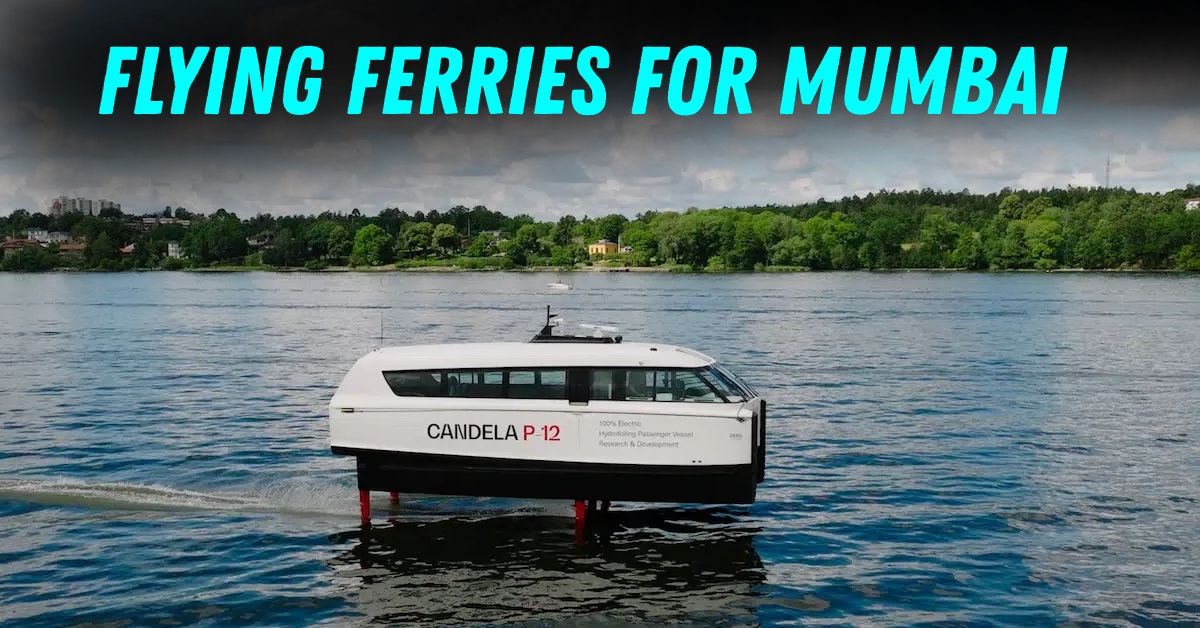Mumbai to get 11 Flying Ferries!


As the sun rises over Mumbai’s bustling coastline, a new chapter in the city’s transport story is about to take flight, quite literally. In a move that promises to transform daily commutes, Mumbai is preparing to launch a fleet of 11 “flying” electric ferries, the Candela P-12, operated by JalVimana.
These aren’t your average boats: they will glide above the water on hydrofoils, offering a futuristic, clean, and remarkably swift alternative to the city’s infamous road congestion. The first routes will connect the Gateway of India to Alibaug and Elephanta Island, slashing travel times from nearly three hours by road to just 25 to 30 minutes by sea. There’s even a plan for a direct ferry from the upcoming Navi Mumbai airport to the city centre, further tightening the city’s web of connectivity.
The Candela P-12 ferries are a marvel of modern marine engineering. Built by a Swedish company, each vessel uses computer-guided hydrofoils, underwater wings that lift the hull above the water as the ferry picks up speed. This reduces drag by up to 80 percent compared to conventional boats, enabling higher speeds, lower energy consumption, and an incredibly smooth, silent ride. For passengers, this means not only a nausea-free journey but also a far quieter and more pleasant commuting experience, even when the Arabian Sea is choppy.
The ferries are fully electric, producing zero local emissions and operating at a fraction of the cost of their diesel-powered counterparts. Fast-charging capabilities mean they can be quickly topped up between trips, keeping turnaround times short and schedules tight. With no wake and minimal noise, they’re also gentle on Mumbai’s busy waterways and the communities that line them.
Mumbai’s roads are among the most congested in the world, with over 23 million residents and a road network that’s bursting at the seams. Even with new metro lines and ongoing infrastructure upgrades, the city’s transport arteries are stretched thin. Waterways, by contrast, remain vastly underused, despite Mumbai’s natural advantage as a coastal metropolis.
The introduction of flying ferries is a strategic move to unlock this potential. By shifting a portion of the daily commute onto the sea, the city hopes to ease pressure on roads and rails, cut down on pollution, and offer a faster, more reliable way to travel. The Maharashtra government has signalled its intent to scale up this initiative, with plans for thousands more electric vessels in the coming years. The vision is a high-speed, green transport corridor that threads Mumbai’s coastline and integrates seamlessly with existing public transport.
For transport enthusiasts and casual commuters alike, the Candela P-12 fleet is more than just a new way to get around, it’s a glimpse of what urban mobility could look like in coastal megacities worldwide. After proving itself in Stockholm, where the P-12 replaced diesel ferries with faster, cleaner service, Mumbai is now set to become a global showcase for electric hydrofoil technology.
The benefits are clear: drastically reduced travel times, zero emissions, and a commuting experience that’s as futuristic as it is practical. For a city grappling with air pollution, traffic jams, and the urgent need for sustainable solutions, the flying ferry fleet represents a bold, innovative step forward. It’s a project that’s as much about reimagining the city’s relationship with its waterways as it is about moving people from point A to B.
As JalVimana prepares to launch the first Candela P-12 ferries, anticipation is building. Will these flying boats live up to their promise? If early trials and international experience are any indication, Mumbai’s commuters are in for a treat.
The success of this initiative could well inspire other coastal cities to follow suit, making the dream of clean, fast, and efficient waterborne transit a reality for millions.
For now, the city waits at the water’s edge, ready to board a future where the fastest way across Mumbai might just be above the waves.